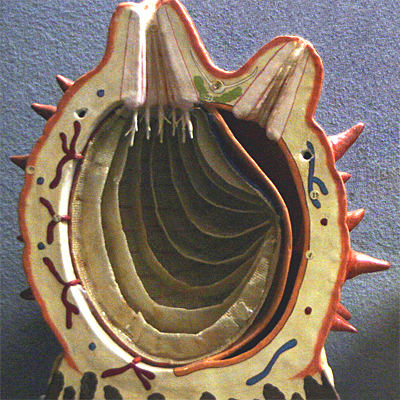
INVERTEBRATE MEMBERS OF THE PHYLUM CHORDATA
The subphyla Urochordata and CephalochordataChordates are coelomate animals that possess:
- a supporting rod or notochord;
- a single hollow dorsal nerve cord;
- ‘metameric segmentation’: division of the body muscles into similar units, known as segments, that are arranged serially one behind the other;
- gills at some stage of their lives: slit-like openings leading from the pharynx (throat region) to the outside of the body;
- typically a post-anal tail: a region of the body behind the anus that does not contain any part of the gut.
There are two kinds of Chordates: Vertebrate Chordates and Invertebrate Chordates.
VERTEBRATE CHORDATES
The sub-phylum Vertebrata includes the majority of living chordates (37,790 species). They differ from the invertebrate chordates in possessing :
- an internal skeleton, including a vertebral column which encloses the nerve cord;
- a brain enclosed in a skull;
- a pumping heart and efficient blood circulation.
There are four classes of recent vertebrates: Amphibians, Reptiles , Birds and Mammals.
INVERTEBRATE CHORDATES
The two subphyla of invertebrate chordates, the subphylum Urochordata (1250 species) and the subphylum Cephalochordata (45 species), lack a vertebral column. Although insignificant and little known, these marine animals are of great scientific interest as it is generally accepted that their ancestors were close relatives of the ancestral vertebrate. Studies of living invertebrate chordates have been very important in helping to solve the mystery of ‘the origin of the vertebrates’.
Origin of the invertebrate chordatesSimilarities between the chordates and living hemichordates suggest that they all evolved from a common ancestor belonging to the Class Graptolita, an extinct group of hemichordates. The reasons for thinking this are:
Similarities in larval development between hemichordates and echinoderms suggest that echinoderms may also share this common graptolite ancestor. |
 |
| UROCHORDATA | CEPHALOCHORDATA |






